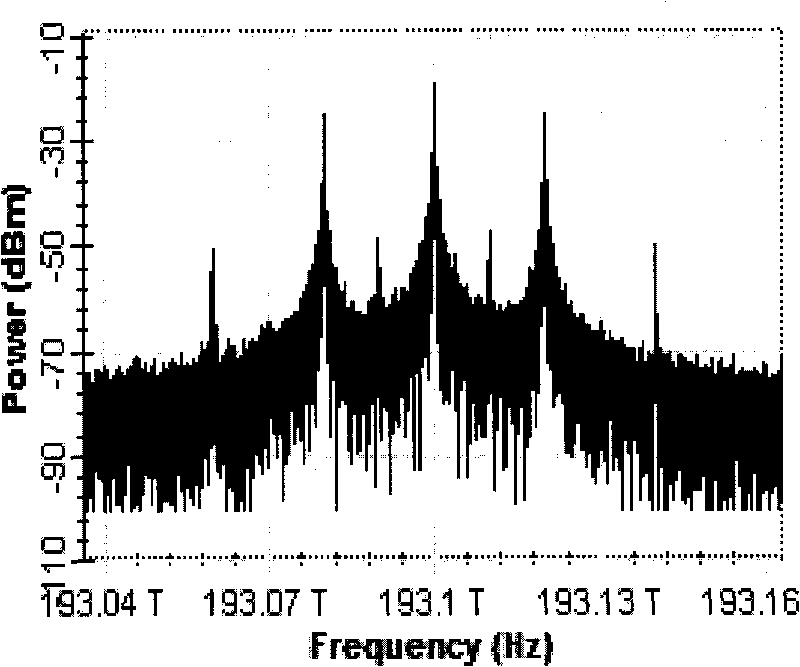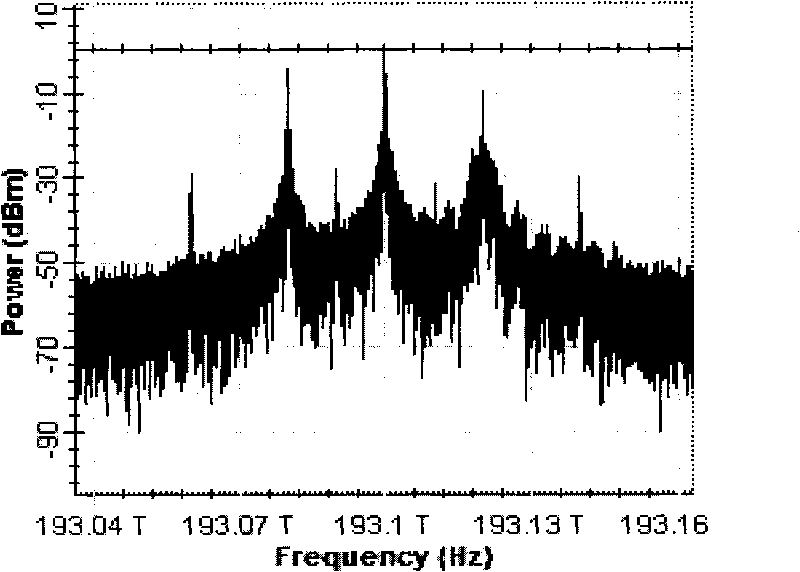Quadruple frequency-based scheme for realizing base station passive full duplex millimeter wave RoF link
A millimeter-wave, full-duplex technology, applied in the field of full-duplex link communication, can solve the problems of expensive external modulator and local oscillator signal source, high requirements for working environment, high cost of light source, etc., to achieve strong Actual operability, simplification of base station structure and functions, effect of base station cost reduction
- Summary
- Abstract
- Description
- Claims
- Application Information
AI Technical Summary
Problems solved by technology
Method used
Image
Examples
Embodiment Construction
[0023] The working wavelength of the laser is λ, the present invention takes 1552.5nm (193.1THz) as an example, and the downlink millimeter wave signal rate is f D The present invention takes 40GHz as an example, the corresponding frequency of the lithium niobate Mach-Zehnder modulator is 10GHz, the DC bias voltage is 0, the peak-to-peak voltage of the RF local oscillator is 8V, and the resulting spectrum is as figure 2 Shown. The second sideband is separated by an FBG with a center wavelength of 1552.12nm and a bandwidth of 30GHz, and a binary NRZ baseband signal with a rate of 5Gbit / s is loaded onto the sideband through an intensity modulator with a response rate of 5GHz, and adjusted by a polarization controller After the polarization direction is made parallel, the optical coupler is combined, and the spectrum measured by the spectrometer is as image 3 Shown. In the base station, the optical millimeter wave signal and the optical carrier are separated by the MZI with a del...
PUM
 Login to View More
Login to View More Abstract
Description
Claims
Application Information
 Login to View More
Login to View More - R&D
- Intellectual Property
- Life Sciences
- Materials
- Tech Scout
- Unparalleled Data Quality
- Higher Quality Content
- 60% Fewer Hallucinations
Browse by: Latest US Patents, China's latest patents, Technical Efficacy Thesaurus, Application Domain, Technology Topic, Popular Technical Reports.
© 2025 PatSnap. All rights reserved.Legal|Privacy policy|Modern Slavery Act Transparency Statement|Sitemap|About US| Contact US: help@patsnap.com



